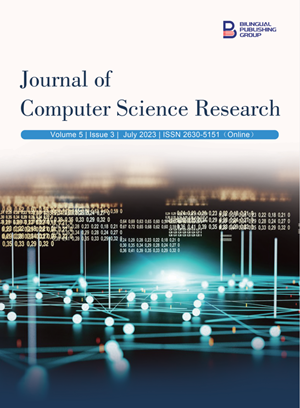
Development of New Machine Learning Based Algorithm for the Diagnosis of Obstructive Sleep Apnea from ECG Data
DOI:
https://doi.org/10.30564/jcsr.v5i3.5762Abstract
In this study, a machine learning algorithm is proposed to be used in the detection of Obstructive Sleep Apnea (OSA) from the analysis of single-channel ECG recordings. Eighteen ECG recordings from the PhysioNet Apnea-ECG dataset were used in the study. In the feature extraction stage, dynamic time warping and median frequency features were obtained from the coefficients obtained from different frequency bands of the ECG data by using the wavelet transform-based algorithm. In the classification phase, OSA patients and normal ECG recordings were classified using Random Forest (RF) and Long Short-Term Memory (LSTM) classifier algorithms. The performance of the classifiers was evaluated as 90% training and 10% testing. According to this evaluation, the accuracy of the RF classifier was 82.43% and the accuracy of the LSTM classifier was 77.60%. Considering the results obtained, it is thought that it may be possible to use the proposed features and classifier algorithms in OSA classification and maybe a different alternative to existing machine learning methods. The proposed method and the feature set used are promising because they can be implemented effectively thanks to low computing overhead.
Keywords:
ECG; Sleep apnea; Classification; Dynamic time warping; Median frequencyReferences
[1] Wiegand, L., Zwillich, C.W., 1994. Obstructive sleep apnea. Disease-a-Month. 40(4), 202-252. DOI: https://doi.org/10.1016/0011-5029(94)90013-2
[2] Paiva, T., Attarian, H., 2014. Obstructive sleep apnea and other sleep-related syndromes. Handbook of clinical neurology. Elsevier: Amsterdam. pp. 251-271.
[3] Yildiz, A., 2017. Tek kanallı EKG kayıtları analizinden uyku apne tespiti (Turkish)[Detection of sleep apnea from analysis of single-channel ECG recordings]. Dicle Üniversitesi Mühendislik Fakültesi Mühendislik Dergisi. 8(1), 111-122.
[4] Faal, M., Almasganj, F., 2021. Obstructive sleep apnea screening from unprocessed ECG signals using statistical modelling. Biomedical Signal Processing and Control. 68, 102685. DOI: https://doi.org/10.1016/j.bspc.2021.102685
[5] Tyagi, P.K., Agrawal, D., 2023. Automatic detection of sleep apnea from single-lead ECG signal using enhanced-deep belief network model. Biomedical Signal Processing and Control. 80(2), 104401. DOI: https://doi.org/10.1016/j.bspc.2022.104401
[6] Yang, Q., Zou, L., Wei, K., et al., 2022. Obstructive sleep apnea detection from single-lead electrocardiogram signals using one-dimensional squeeze-and-excitation residual group network. Computers in Biology and Medicine. 140, 105124. DOI: https://doi.org/10.1016/j.compbiomed.2021.105124
[7] Penzel, T., Moody, G.B., Mark, R.G., et al. (editors), 2000. The Apnea-ECG database. Computers in Cardiology. 2000 September 24-27; Cambridge. USA: IEEE. p. 255-258.
[8] Tuncer, E., Bolat, E.D., 2022. Destek Vektör Makinaları ile EEG Sinyallerinden Epileptik Nöbet Sınıflandırması (Turkish)[Epileptic seizure classification from EEG signals with support vector machines]. Politeknik Dergisi. 25(1), 239-249. DOI: https://doi.org/10.2339/politeknik.672077
[9] Mallat, S.G., 1989. A theory for multiresolution signal decomposition: The wavelet representation. IEEE Transactions on Pattern Analysis and Machine Intelligence. 11(7), 674-693. DOI: http://dx.doi.org/10.1109/34.192463
[10] Zhang, Z., Tavenard, R., Bailly, A., et al., 2017. Dynamic time warping under limited warping path length. Information Sciences. 393, 91-107. DOI: https://doi.org/10.1016/j.ins.2017.02.018
[11] Jeong, Y.S., Jeong, M.K., Omitaomu, O.A., 2011. Weighted dynamic time warping for time series classification. Pattern Recognition. 44(9), 2231-2240. DOI: https://doi.org/10.1016/j.patcog.2010.09.022
[12] Bakir, C., 2016. Automatic speaker gender identification for the German language. Balkan Journal of Electrical and Computer Engineering. 4(2), 79-83. Available from: https://dergipark.org.tr/en/download/article-file/458645
[13] Brown, C.G., Griffith, R.F., Ligten, P.V., et al., 1991. Median frequency—a new parameter for predicting defibrillation success rate. Annals of Emergency Medicine. 20(7), 787-789. DOI: https://doi.org/10.1016/S0196-0644(05)80843-1
[14] Tonner, P.H., Bein, B., 2006. Classic electroencephalographic parameters: Median frequency, spectral edge frequency etc. Best Practice & Research Clinical Anaesthesiology. 20(1), 147-159. DOI: https://doi.org/10.1016/j.bpa.2005.08.008
[15] Masetic, Z., Subasi, A., 2016. Congestive heart failure detection using random forest classifier. Computer Methods and Programs in Biomedicine. 130, 54-64. DOI: https://doi.org/10.1016/j.cmpb.2016.03.020
[16] Coskun, G., Aytekin, I., 2021. Early detection of mastitis by using infrared thermography in holstein-friesian dairy cows via classification and regression tree (CART) Analysis. Selcuk Journal of Agriculture and Food Sciences. 35(2), 118-127.
[17] Tuncer, E., Bolat, E.D., 2022. Classification of epileptic seizures from electroencephalogram (EEG) data using bidirectional short-term memory (Bi-LSTM) network architecture. Biomedical Signal Processing and Control. 73, 103462. DOI: https://doi.org/10.1016/j.bspc.2021.103462
[18] Sowmya, S., Jose, D., 2022. Contemplate on ECG signals and classification of arrhythmia signals using CNN-LSTM deep learning model. Measurement: Sensors. 24, 100558. DOI: https://doi.org/10.1016/j.measen.2022.100558
[19] Dağli, E., Büber, M., Taspinar, Y.S., 2022. Detection of accident situation by machine learning methods using traffic announcements: The case of metropol Istanbul. International journal of applied mathematics electronics and computers. 10(3), 61-67.
[20] Razi, A.P., Einalou, Z., Manthouri, M., 2021. Sleep Apnea classification using random forest via ECG. Sleep and Vigilance. 5, 141-146. DOI: https://doi.org/10.1007/s41782-021-00138-4
Downloads
How to Cite
Issue
Article Type
License
Copyright © 2023 Author(s)

This is an open access article under the Creative Commons Attribution-NonCommercial 4.0 International (CC BY-NC 4.0) License.




 Erdem Tuncer
Erdem Tuncer






